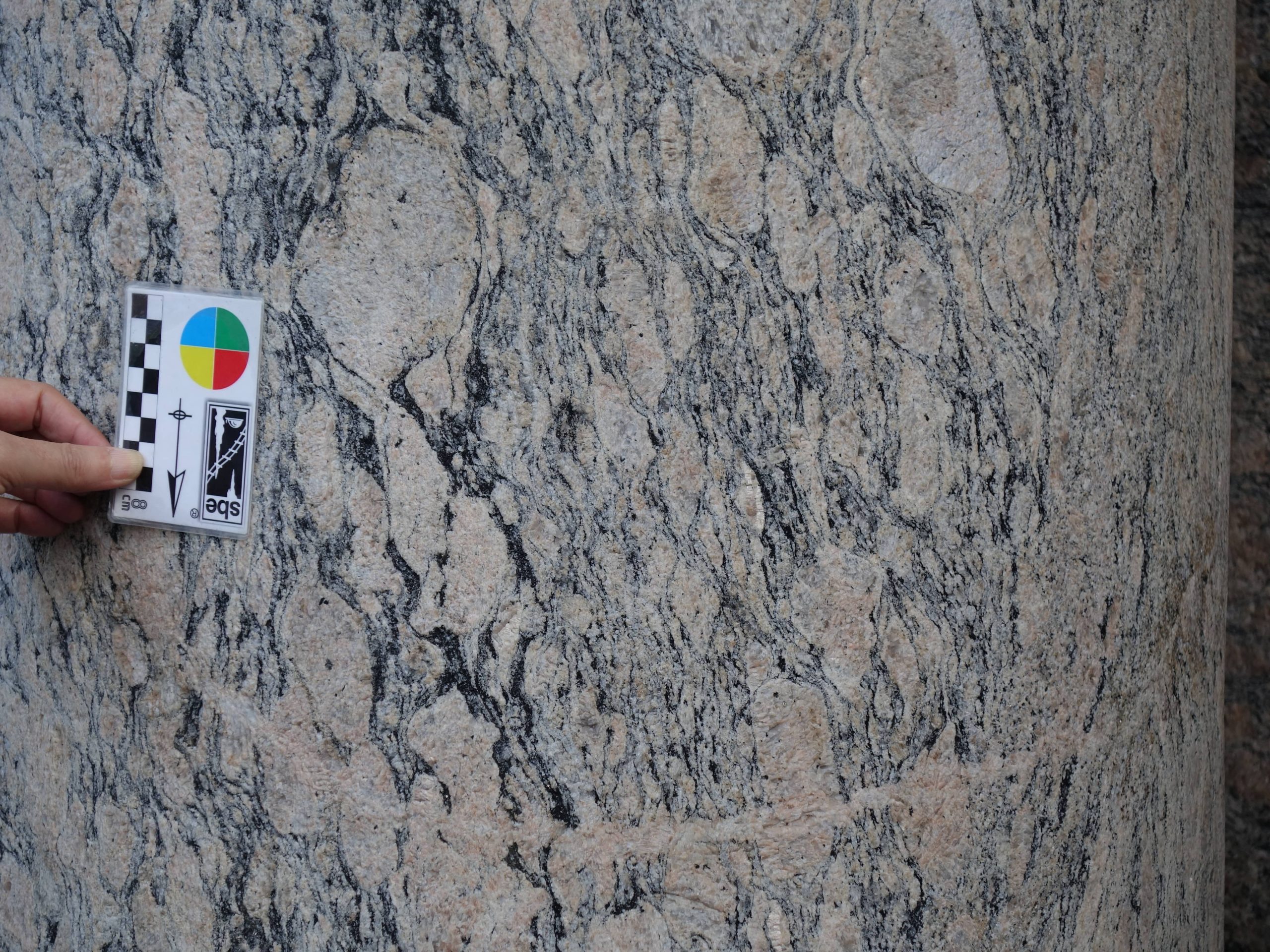
Facoidal Gneis (National Archive column). Picture by: Felipe A. Monteiro
Year designation
Lithology
Aesthetics
Geological settings
Neoproterozoic – Edicarian – Rio de Janeiro Suite
Location
Rio de Janeiro and Niterói, Rio de Janeiro, Brazil
Facoidal Gneis (National Archive column). Picture by: Felipe A. Monteiro
The most carioca of rocks
Facoidal Gneiss is the most ‘carioca‘ (relative to the city of Rio de Janeiro) of rocks; the most representative lithology of Rio’s natural and built heritage. Due to its abundance on the rocky outcrops around Guanabara Bay, it was exploited in many quarries and continuously used to build Rio’s World Heritage site from the Portuguese occupation (16th century) to the mid-20th century. There are countless examples of its use as rough or finely worked building stone in Rio, such as the remarkable baroque art of Master Valentim or many eclectic heritage buildings (e.g. the National Historical and Artistic Heritage Agency Building). This stone was also used in the ’Valongo Wharf ‘and ‘Burle Marx’s House’ (UNESCO World Heritage Sites) and some other Brazilian cities. Its geological history and features shaped the famous landscape of Guanabara Bay, including the IUGS Geosite of Sugar Loaf.
- Author(s)
Nuria Fernández Castro.
Centro de Tecnologia Mineral – CETEM, Av. Pedro Calmon, 900, Cidade Universitária, 21941-908 Rio de Janeiro – RJ, Brasil


